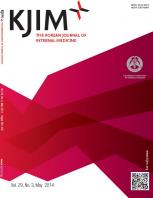
Positive effect of D-003 on bone mineral density in postmenopausal women

Positive effect of D-003 on bone mineral density in postmenopausal women
Effects of D-003 (10 mg/day) on bone mineral density of the lumbar spine and femoral neck in postmenopausal women: a randomized, double-blinded study
Korean J Intern Med. 2011 Jun;26(2):168-78. doi: 10.3904/kjim.2011.26.2.168. Epub 2011 Jun 1Synopsis
83 postmenopausal women with osteopenia or osteoporosis were randomized to determine the efficacy of D-003, an isolate from sugar cane wax, on improving bone mineral density (BMD). Participants were treated with either 10mg/day D-003 or placebo for 3 years. Results at the end of the trial indicated that lumbar spine BMD was significantly improved with D-003 compared to placebo. Women treated with ...
To view the full content, login to your account,
or start your 30-day FREE Trial today.
FREE TRIAL
LOGIN
Forgot Password?
Explore some of our unlocked ACE Reports below!

Learn about our AI Driven
High Impact Search Feature
Our AI driven High Impact metric calculates the impact an article will have by considering both the publishing journal and the content of the article itself. Built using the latest advances in natural language processing, OE High Impact predicts an article’s future number of citations better than impact factor alone.
Continue



 LOGIN
LOGIN

Join the Conversation
Please Login or Join to leave comments.